Last updated on August 21st, 2024
Featured image: The Nakasendo Trail, an ancient pilgrimage route near Kyoto. Get ready to experience adventure travel in Japan! / Photo by Carolyn Ray
Adventure travel and cultural immersion in Japan
by Carolyn Ray
When I first read the description of my adventure travel in Japan itinerary, I’m a bit intimidated. The trip activity level is described as ‘moderate’, with a hike over the 2,600 foot Magome Pass, a walk along the Kuniga Coast along the edge of the 843 foot Matengai Cliff, and 20 miles of cycling in the Oki Islands, a wind and wave-sculpted archipelago in the Sea of Japan. I’m in decent physical shape, recovering from a knee injury, but I think I can handle it. After all, I’ve walked the Camino de Santiago, swam with piranhas in the Amazon, and ridden horseback up Cotapaxi Volcano in Ecuador.
But then I see the word ‘onsen’ and my heart stops. These Japanese hot springs are the ultimate bathing experience, but am I ready for full nudity? As a woman in midlife, I’m not precious about my age or body, but I’m a bit nervous about being naked in front of other women. But then I remember why I travel: it’s to challenge my boundaries and learn something new about myself. Perhaps getting naked in an onsen, like much of the trip, is an opportunity to face my fears and be set free.
Get stories like this delivered directly to your inbox – join the mailing list here!
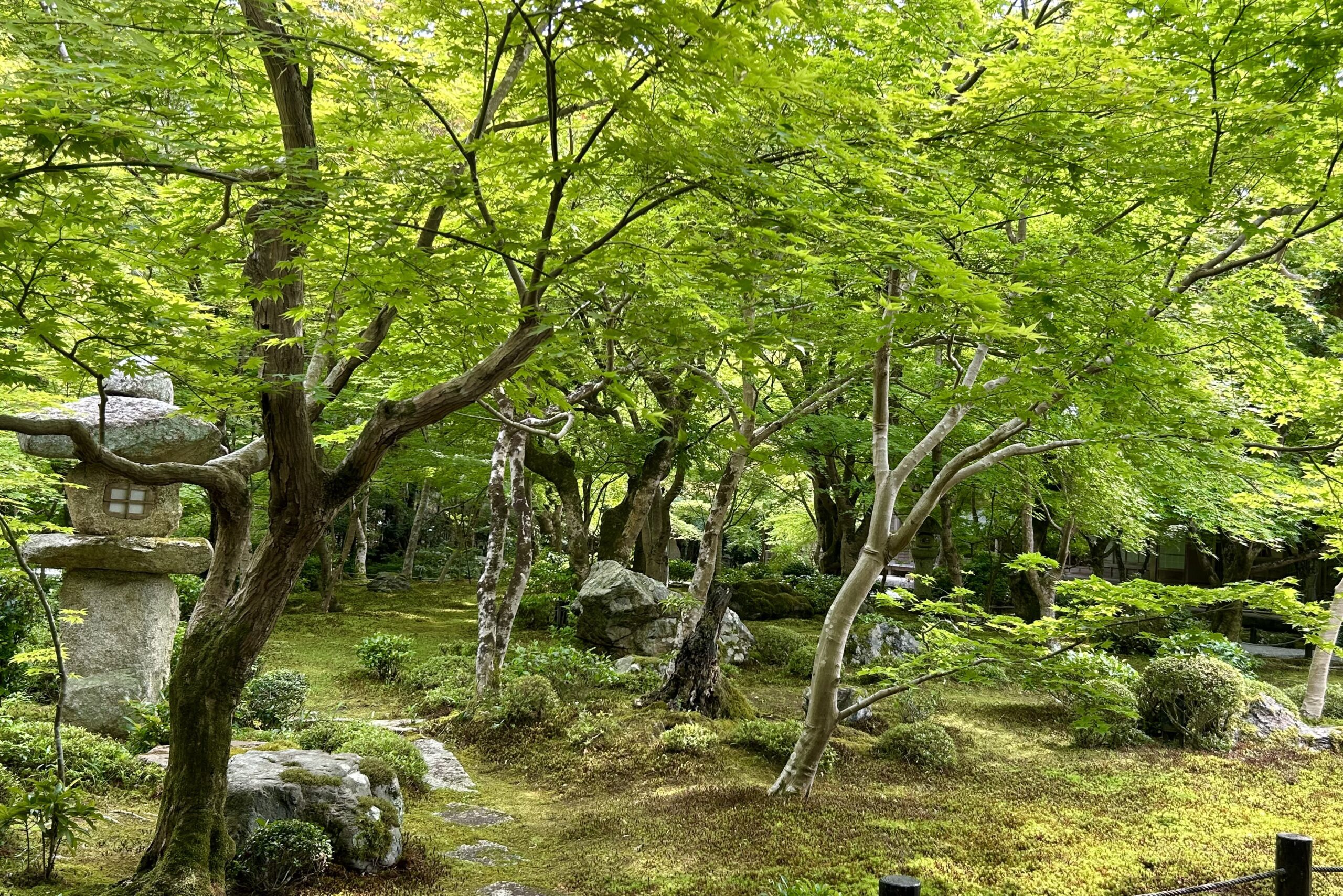
A moment of silence in Kyoto’s Enkoji Buddhist Temple / Photo by Carolyn Ray
Reframing adventure travel in Japan, from a woman’s perspective
I’m on an organized tour called “Sacred Japan” with Wild Women Expeditions, a Canadian-based women’s adventure travel company. It’s my third time with Wild Women. Like all of their trips, this one is designed by women for women. While there is time in Tokyo and Kyoto, this experience is focused on the countryside and the Oki Islands, an archipelago on the Sea of Japan.
“For this trip, it was really important to me that we witness the talents of Japanese women who are the generational heartbeat of this country,” says Jennifer Haddow, CEO, Wild Women Expeditions. “We hope to awaken all the senses through sound, ancient pilgrimage routes, samurai history, monastery stays, tea ceremonies, and unfamiliar flavours. This less-travelled route is the Japan you didn’t know you were dreaming of and together, women can experience it in the camaraderie of Wild Women who are just as curious and tempted by Japan’s secrets!”
We are a small group of seven from across the US and Canada, all different ages and backgrounds; divorced, widowed, single and married. We have three female tour guides, Miko, Yuka and Sera, who teach us how to order food, get train tickets, and use our Suica travel cards to make the experience fun and easy.
Read More: Travel to Kyoto with “The Kimono. Tattoo”
Five lessons from my trip to Japan
1. Women’s wisdom knows no borders
There is something very special about travelling with a group of women. No subject is taboo, and no questions are asked when you take your sweater off for the fourth time in 10 minutes. Almost immediately, I start to dial down my own worries and listen to the incredible stories being shared, about loss, grief, joy and freedom. Within hours, there is a feeling of support and sisterhood among the other women on my trip.
On this trip, Japanese women are featured in every experience, including women tea farmers, women-owned restaurants and women leading tea ceremonies. There’s even an opportunity to bang the taiko drum with a group of Japanese women who keep the rhythm of their ancestors alive.
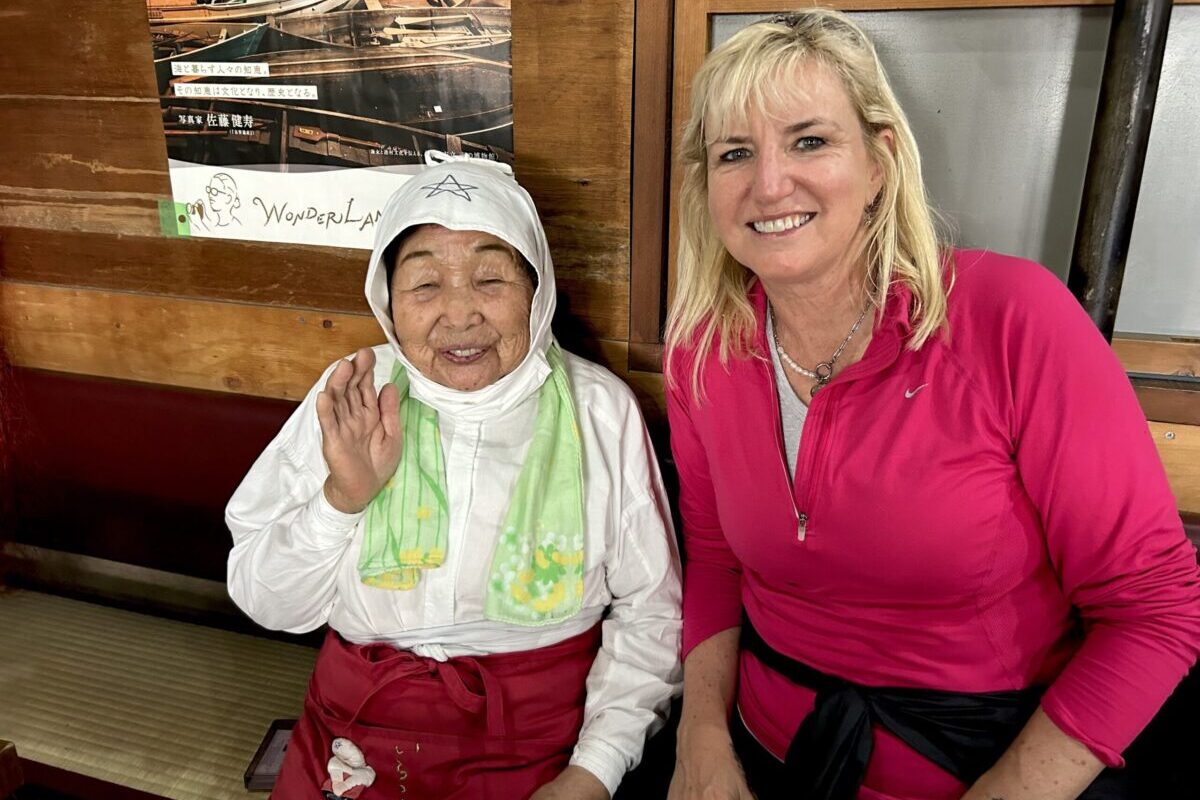
With Reiko Name, 92, a third-generation Ama diver in Toba
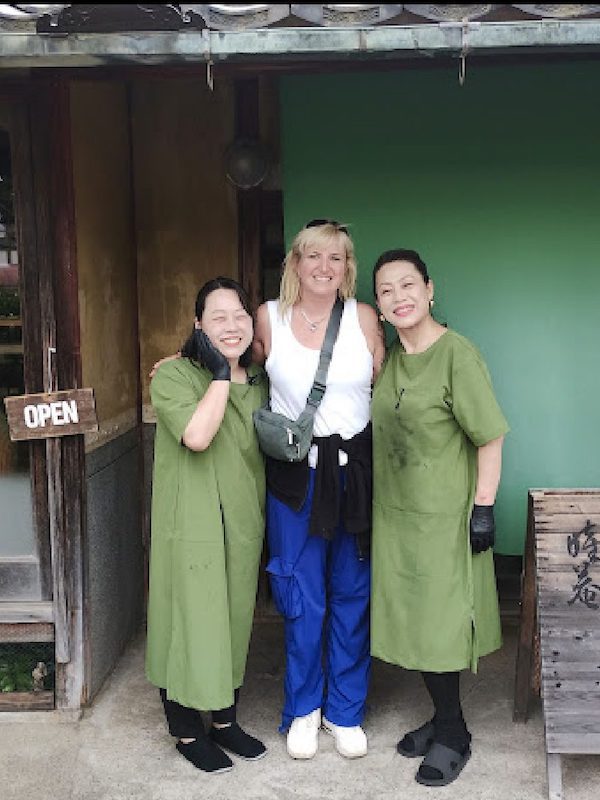
Mother-daughter restaurant duo Shihono Uehara and her mother Mutsumi Tanaka in Shiga.
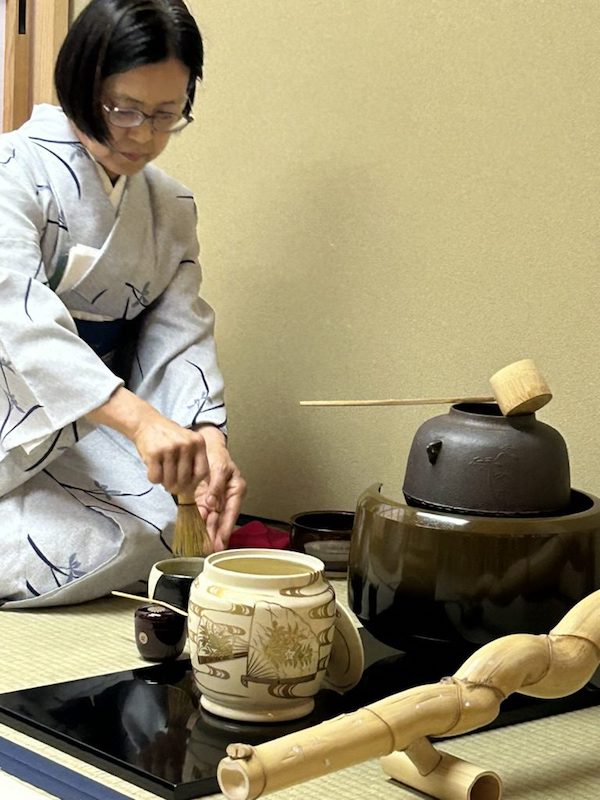
A tea cermeony in Kyoto at Tea Ceremony Nagano
One of the most memorable experiences on our trip is visiting the Ama divers in Toba, Japan. Reiko, a 92-year-old third-generation Ama diver, says her mother taught her to free drive when she was 10. She recently retired at 82.
The feeling of sisterhood strengthens throughout the trip, as we meet other women just like us. Everywhere we go, women hug us, clasp our hands and we bow to each other, creating a bond of womanhood. Somehow, the fact that we don’t speak Japanese is irrelevant. What’s important is that we are connected.
Read More: The Joy of Exploring Gardens
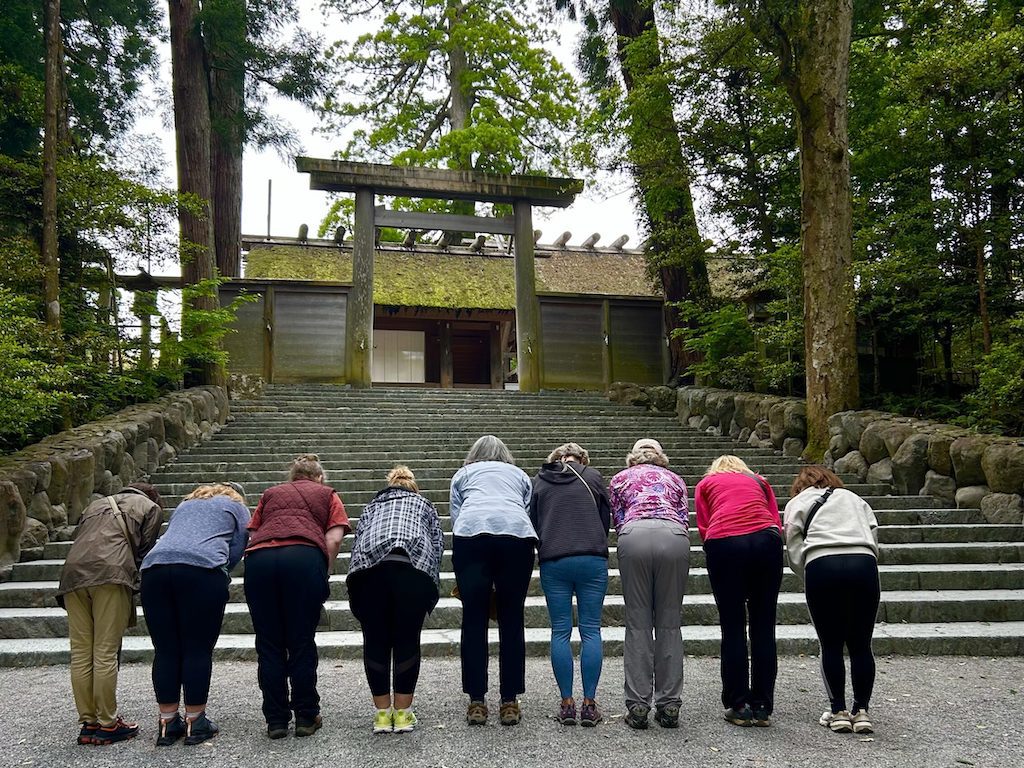
Bowing at the Shinto Grand Shrine of Ise, dedicated to the solar goddess
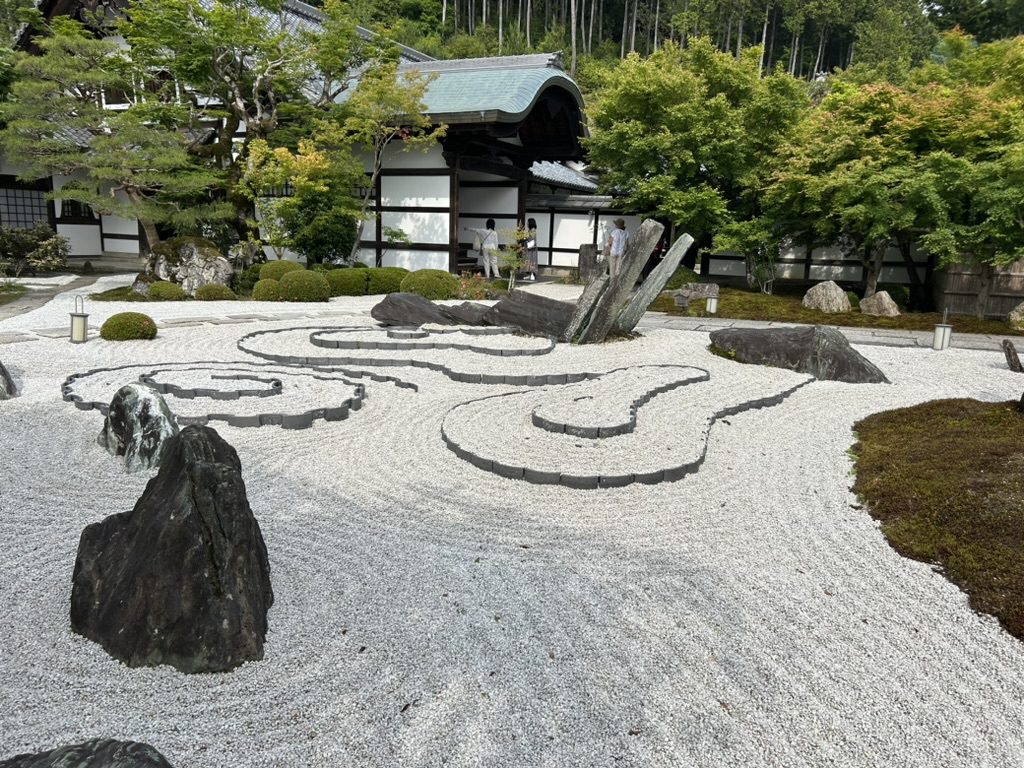
A hidden treasure in Kyoto: Enkoji Buddhist Zen Garden
2. Honouring traditions takes you deeper into culture
In Tokyo, when I visit the Meiji Shrine, I learn about bowing. Bowing is a sign of gratitude and respect, and it happens constantly. I am instructed to bow at each gate, and not to walk in the middle of the path, as it’s reserved for the gods. When you meet someone, bow. When you thank someone, bow. When you enter a temple, bow. After you pray, bow.
Most tea ceremonies are done by women, and highlight the values of harmony (wa), respect (kei), purity (sei) and peace (jaku). The tradition of a tea ceremony was originally imported from China in the 12th century and was only for the nobles. Today, it’s a chance to meet and get to know each other. At a tea ceremony in Nagano, we learn how to make our own matcha tea, turn the bowl, sip from the other side, and listen to the sound of the water, all the while offering thanks to the gods.
Then there’s the food. Coming from a world of processed, fast food, it’s almost a spiritual experience to see how meals are presented in Japan. From vending machines to train bento boxes organized into nine small treats to gourmet dinners, everything is prepared with such care and precision that it almost makes me feel guilty about eating it.
My guide Mika Asai, who has worked in tourism for 13 years, tells me that the Japanese work hard to delight and entertain visitors. “Even if things feel strange, especially the food, just try it once,” she says. “Showing unique experiences is our way of welcoming people.”
Eating as a shared experience is new for me too. One of the most memorable meals is at Sanrakuso, a 13-room Japanese temple inn on Mount Daisen. This is the only ‘shukubo’ or temple in Daisen-ji. In an age-old tradition handed down from generations, all meals are vegetarian, made from vegetables in the nearby woods. Although the food may look like meat and fish, I’m surprised that the slippery rectangular white sashimi-looking food is made from buckwheat.
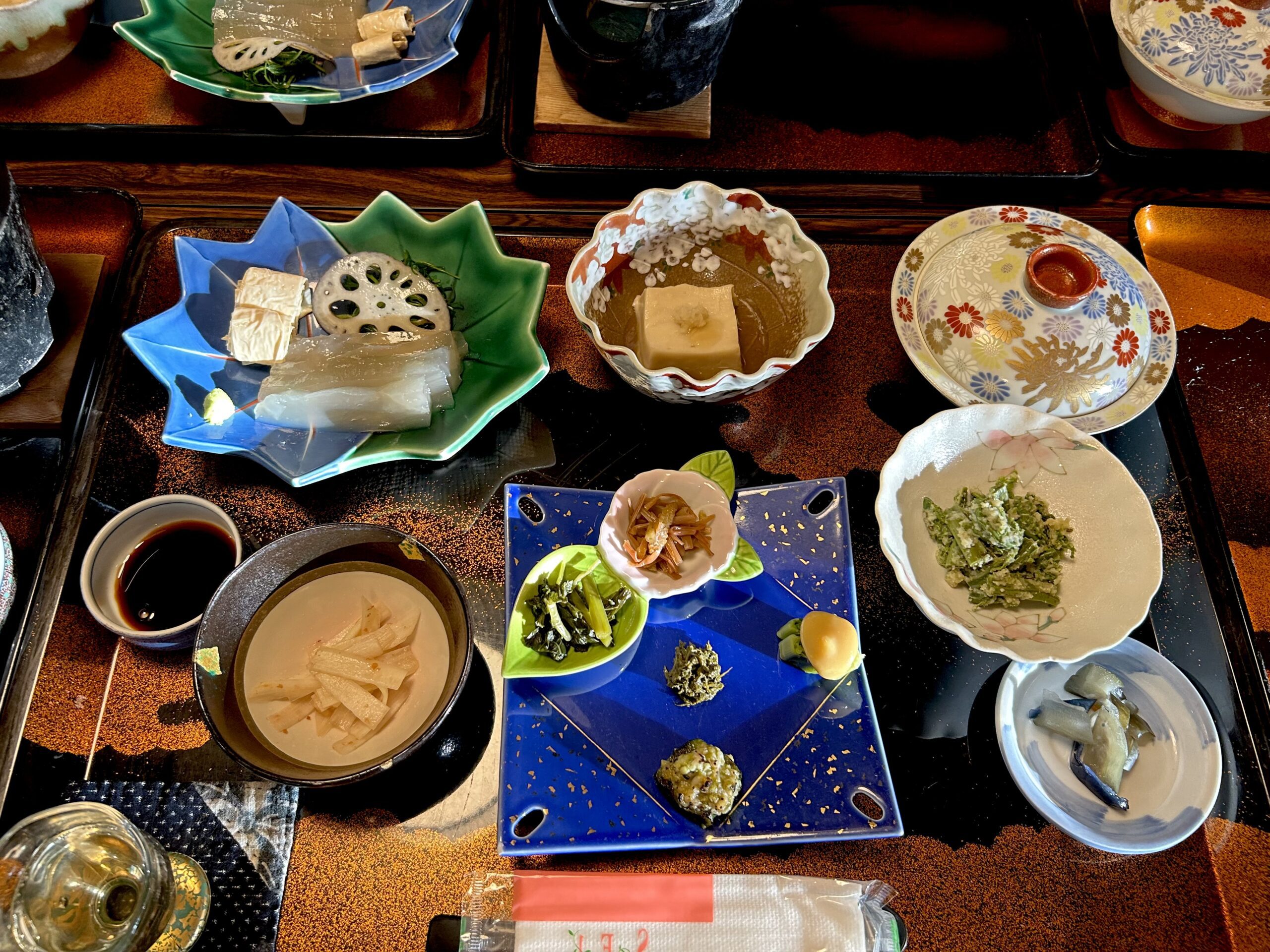
A vegetarian meal at Sanrakuso in Mount Daisen
3. Travel is a way to find yourself
When I meet Diana Mocha, 67, she tells me about her husband, Ed, who suddenly passed away five years ago. She explored Tokyo before I arrived, and shares her plans to travel to Osaka and Hiroshima after our trip. I’m amazed when I hear this is her only second solo trip, and her first with an all-women group.
“I have to really push myself to get out there and learn to rely on myself,” says Mocha. “Being married for 44 years, with someone who was completely supportive, a rock, gives you so much confidence. When that rock is gone, you don’t know what you have to hold on to. What do I cling to now? Myself.”
My 77-year roommate, Alexis Hlavacek, says this is a special time of life for her. “I think women are becoming more of a force and realizing that there is no ‘can’t’ in our vocabulary,” she says. “I don’t want to have any regrets at the end. I have to put myself out there and do things that make me happy. You have to shape your own life.”
4, Being uncomfortable shows you what you’re made of
This adventurous is multi-sport, with hiking, biking and e-biking. We take the train from Kyoto to the Nakasendo Samurai Trail, where Japanese Warriors walked about 400 years ago. Over 330 miles (530 km) long, it was established as a trade route between Kyoto and Edo (modern-day Tokyo) through Nagano’s mountains.
There are 69 ‘post towns’ that served as rest stops for travellers. In Narai-juku (the 34th of the 69 towns), we hike through Tsumago to Magome. It’s incredibly scenic, with waterfalls and cobblestone trails, but it’s challenging.
Recovering from a knee injury, I’m not sure if I can handle the terrain. But then I remember that this is MY camino, not someone else’s. Not only do I find a new level of inner strength, I feel a surge of endorphins from walking on this ancient pilgrimage route, sharing smiles with people along the way and the gorgeous feeling that comes from being in nature.
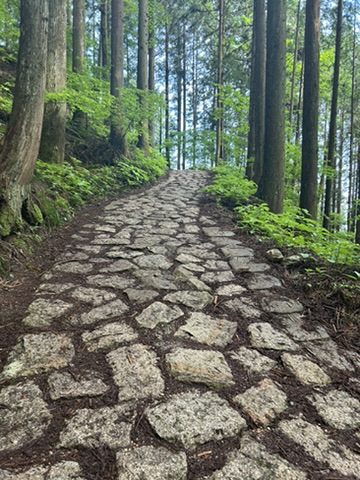
Walking up to the Magome Pass on the Nakasendo Trail
5. There is joy to be found in discomfort
In Japan, onsens (hot springs) are considered sacred and part of traditional Japanese culture, and are often beautiful structures made from materials like marble, granite, and cypress wood. They are perfect for weary travellers who need to ease muscle tension and physical stress, while improving blood circulation, soothing one’s mind, and encouraging better sleep.
My first onsen experience is at Misasa Onsen, an 850-year old sanctuary. Clothed only in a kimono and slippers provided by the hotel, I walk past a waterfall into an area with two entrances. One has a red banner over the entrance and Japanese letters. The other has a blue banner and Japanese letters. Phones aren’t allowed, so I can’t whip out Google Translate to know which is men’s or women’s. I tentatively step into one hallway and walk down it, only to have an attendant call to me. ‘Oh no, I’ve walked into the men’s onsen’, I think, horrified. He runs up to me, and points at my feet, which are still in slippers. No, no, no he says and I realize that I’ve walked into the bathroom with shoes on, a very big faux pas. Quickly, I rush back to the main area and put my shoes in the appropriate shelf, bowing and apologizing as I walk away.
After this mishap, I cautiously walk into the women’s bathroom, where three or four women are sitting on stools naked, in front of mirrors, blow drying their hair. There’s a sign on the wall with instructions to leave everything in a bin before entering the onsen.
I disrobe and open the door to a steamy room with an indoor pool and two outdoor pools. Knowing I need to clean my body first, I choose a bench in the corner and shower hopping into the shallow indoor pool, which is refreshingly warm. There are other women everywhere, some in pairs, one woman with her daughter, all just enjoying the various pools. They smile at me. I start to relax. I take a deep breath, gather my courage and boldly walk to a pool with running water, rocks and flowers.
All around me, I hear the sound of gently gurgling water. Vines trail above my head and the warm air relaxes me. As I settle into the warm water, I’m covered with rose petals, creating a memory that will last forever. I’m all in, loving every moment. Arigatō, Japan!
Disclaimer: I was a guest of Wild Women Expeditions, from our Women’s Travel Directory on this trip. They did not review this article prior to publication. Thank you to Japanese guides Kumiko (Miko) Asai, Yuka Hayafune and Sea Shibuya who kept us on and off the right trains, hiking paths and shared their culture with us. All photos by the author.
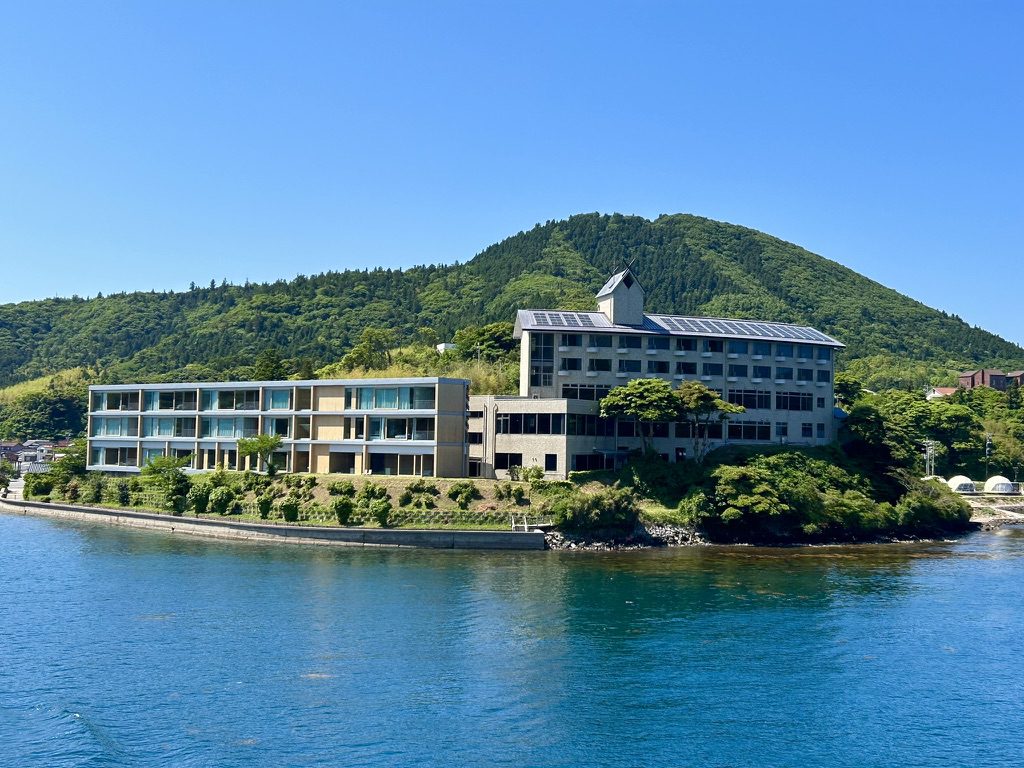
Entô Hotel in Amatown, Oki Islands
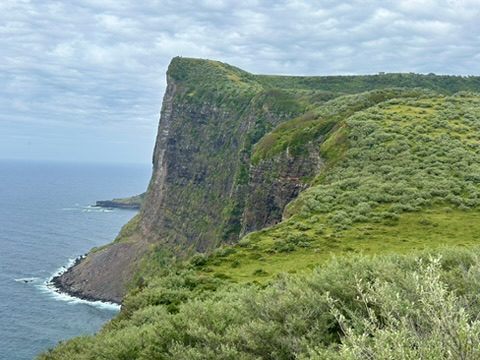
The Sekiheki cliff on the Oki Islands
What to pack for Japan
On this trip, you want to pack light because you’re carrying what you need on your back for three days at a time. Also, the exchange rate is very good and you may want to buy a few things, so leave space for that. I had a 25L Gregory Backpack, an electrical adapter, a light raincoat, comfortable Merrell hiking boots, sports bras and underwear, several pairs of Smartwool Merino socks, sunglasses, sunscreen and layers. Bring one nice outfit for Kyoto/Tokyo (I always bring my Sweaty Betty black dress), a light hoodie and sneakers. I brought my own pajamas but left my jeans, robe, slippers and bathing suit at home. Kimonos and slippers are provided at most hotels and inns.
I used Wise for local purchases, and cash for tipping our guides. Bring a small change purse to hold coins for donations at temples.
How to get to Japan
I flew direct on a 14-hour flight from Toronto to Tokyo on Air Canada. I recommend upgrading at least on the way there but found the flight much easier than a shorter flight to Europe. Get there at least one day in advance. Check for flights here.
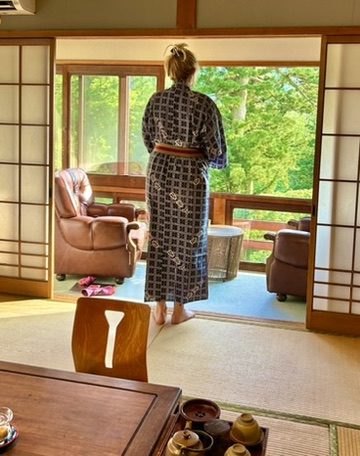
Mount Daison’s Temple Inn in the forest
From Tokyo Airport (NRT), I took the Airport Limousine bus into the city (about 35,000 yen). There is also a train that takes you into Tokyo but the trains can be intimidating with lack of sleep.
To get the Oki Islands, take a 2.5-hour ferry. You can fly out of Kyoto or Tokyo to the Oki Airport on Dōgo. Click here to check for flights.
One regret is I didn’t get to experience a Bullet Train, so arrive early or stay longer to explore cities like Osaka, Kyoto and Hiroshima. From what I saw of Kyoto, it’s worth a longer stay.
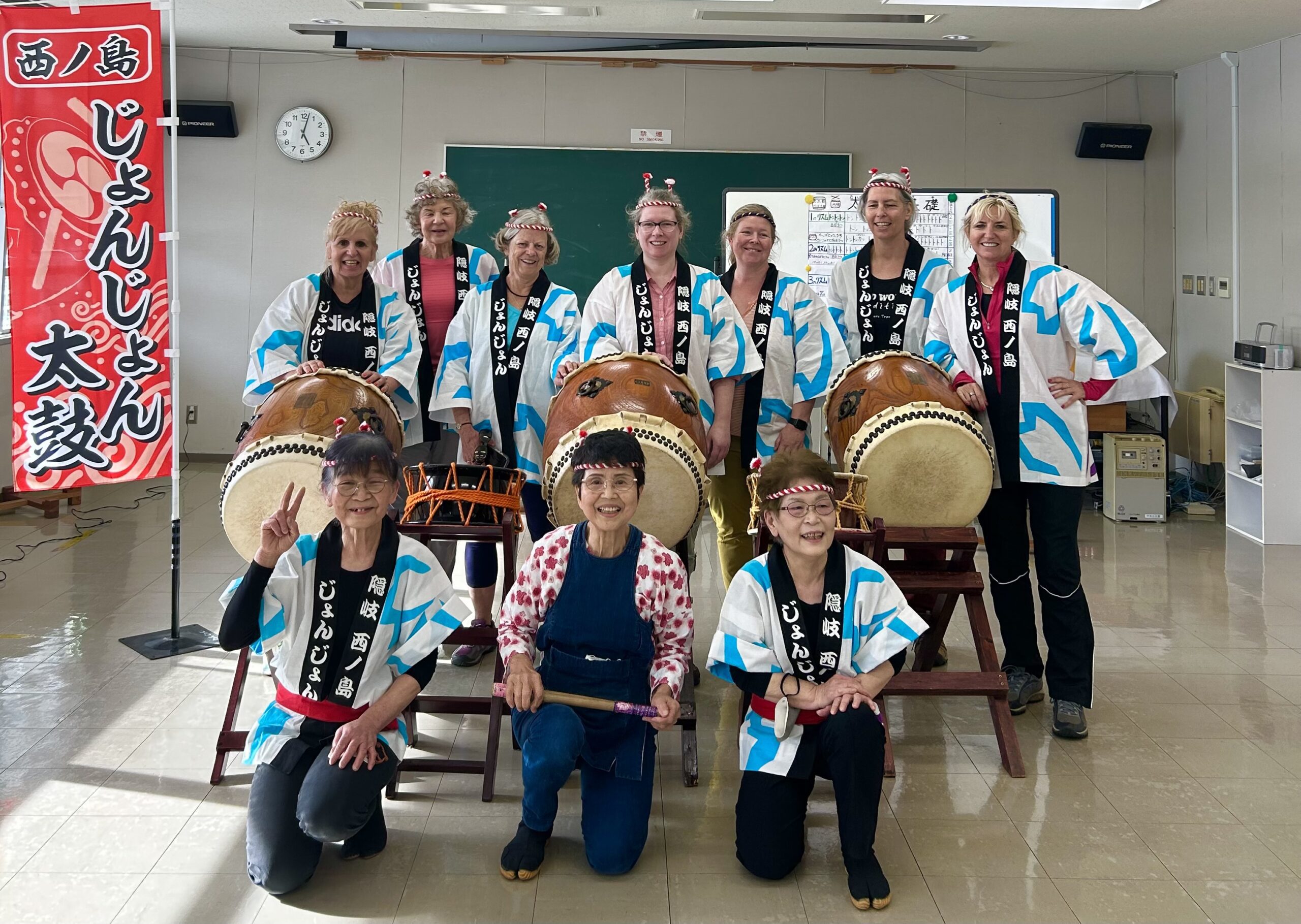
Our small group (Diana, Alexis, Joanne, Susan, Jennifer, Cline and Carolyn) with the female drummers on the Oki Islands.
Read More about Japan
30 Less-Travelled Places for Women in 2024
For our 30th anniversary, JourneyWoman reveals 30 less-travelled places for women in 2024, according to our writers and travel experts.
“The Joy of Exploring Gardens” by Lonely Planet: A New Travel Guide for Garden Lovers
“The Joy of Exploring Gardens” by Lonely Planet takes readers on a journey to some of the world’s most uplifting gardens.
Travel By Book: 12 Countries Solo Women Love
TripFiction’s Tina Hartas helps us travel by book to 12 countries that solo women plan to visit in 2023, from Africa to Peru.

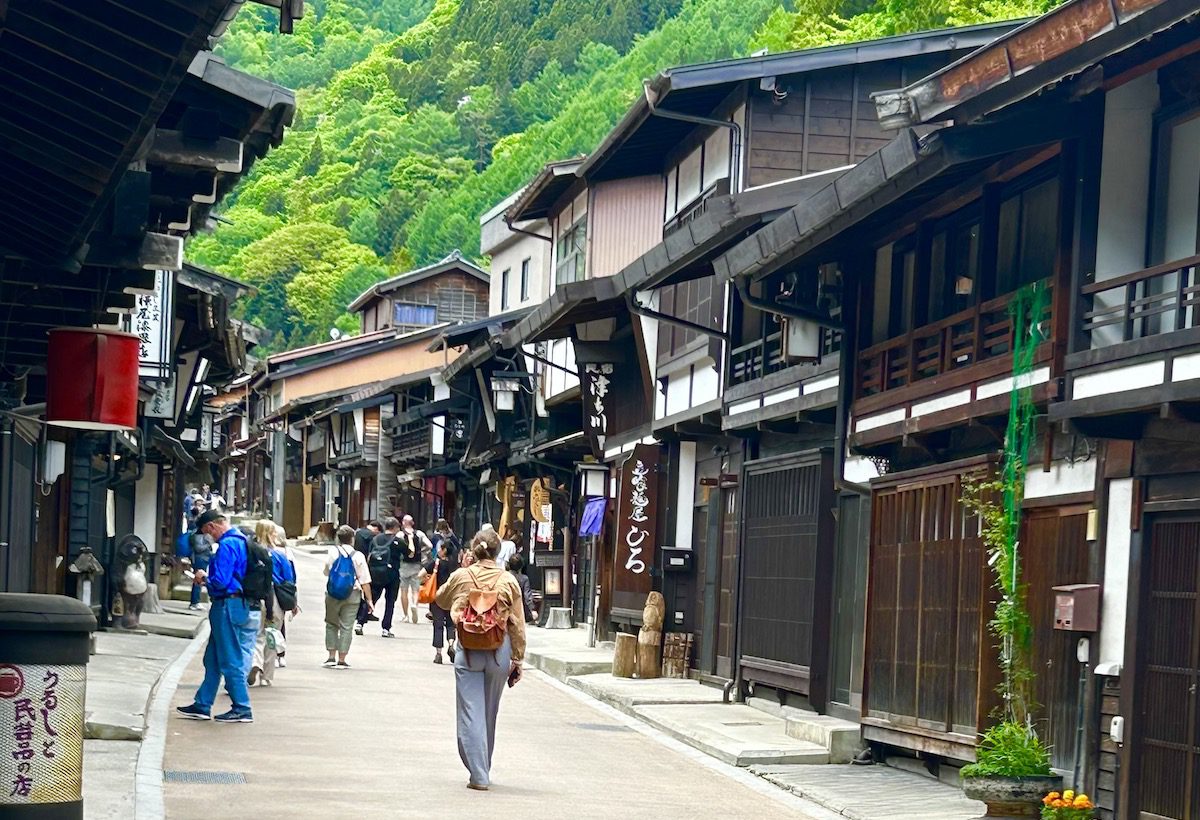




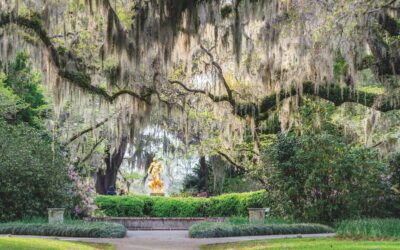

I spent a month in Japan and took the bullet train to Hiroshima. Also visited Nara, Kyoto, Tokyo and many other places. I slept on Tatami mats and bathed in an Onsen. It was absolutely fabulous!
Great read Carolyn!
Comment *bien et toi